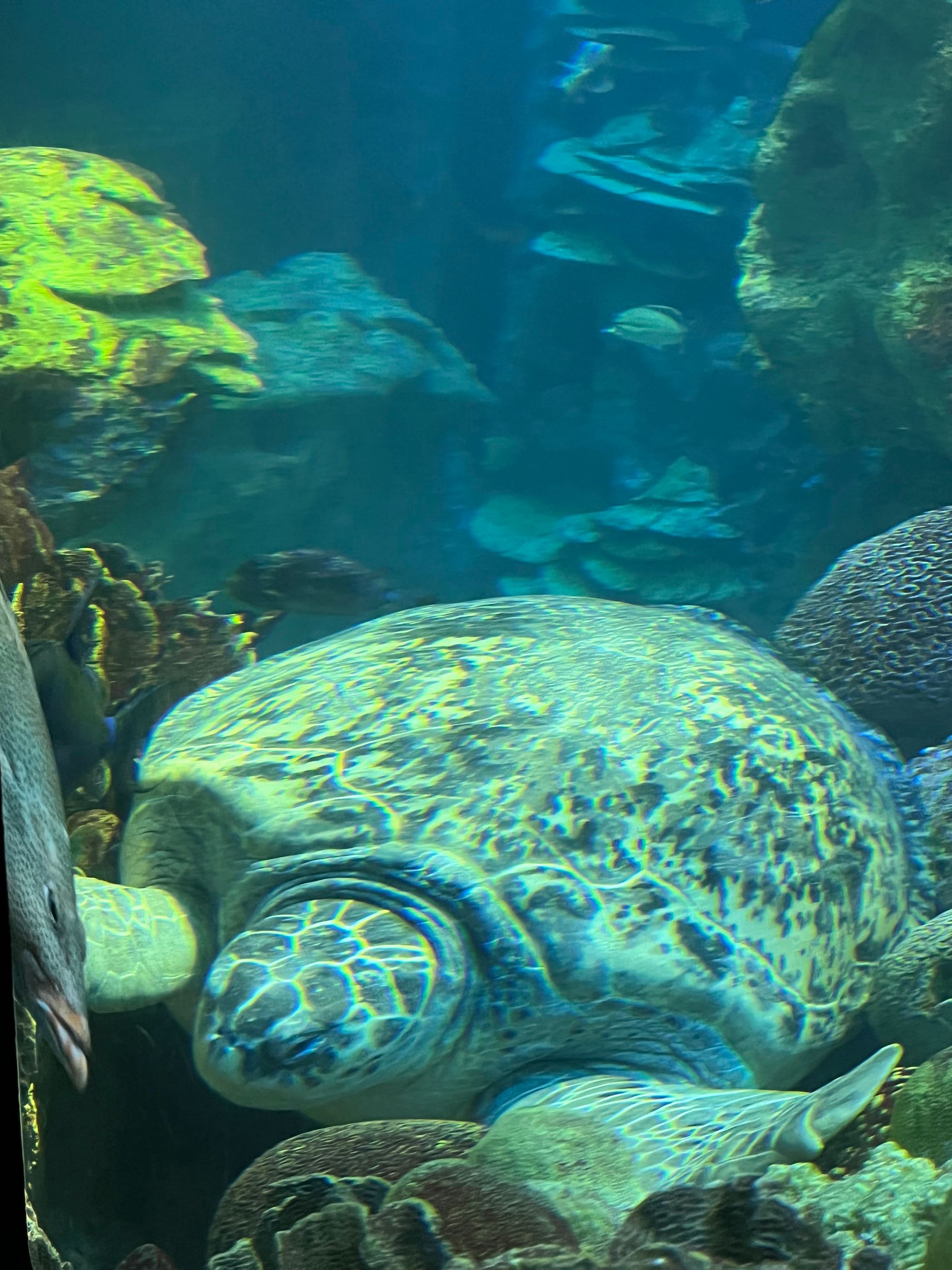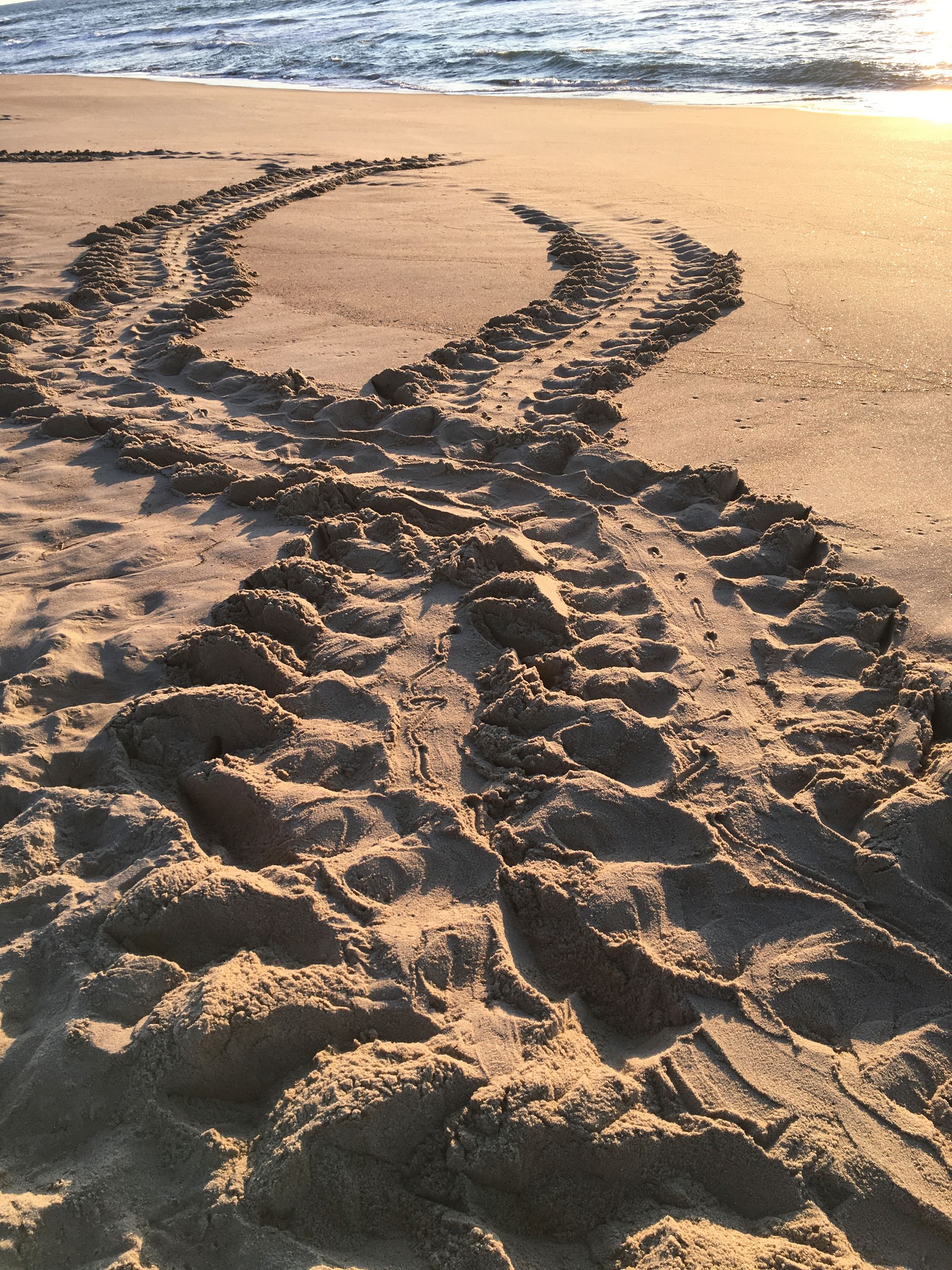As a northern transplant, July is always a difficult time for me now that I live in South Florida. I have always been more conditioned for the cold than the heat. However, there are tradeoffs to everything and I get to experience things here that I couldn’t elsewhere. In fact, right now, we are in the middle of one of my personal favorite ‘seasons’: sea turtle nesting season. In particular, July is the time when some of the earliest laid nests of the season are beginning to hatch, so we are in the overlap time of both nesting females and emerging hatchlings.
Sea turtles have always been close to my heart. In May, I took a trip north to visit family and also got the chance to see one of my earliest inspirations: Myrtle, the queen of the giant ocean tank at the New England Aquarium. She fueled my fascination with sea turtles and my desire to share my love of the natural world.

While I’m not currently involved in any sea turtle monitoring projects, just seeing the results while walking on the beach here brings back fond memories. The majority of nesting sea turtles in Florida (and the vast majority on the Gulf coast where I live) are loggerheads, Caretta caretta. We also have green turtles (like Myrtle), Chelonia mydas and a few leatherbacks, Dermochelys coriacea, only on the Atlantic coast. Leatherbacks are the largest species of sea turtle and the one that much of my own previous field work dealt with. They are truly spectacular.
During nesting season, adult turtles will congregate offshore and mate. Sea turtles have a very strong natal homing instinct, meaning that they are able to travel from their feeding grounds back to the beach of their birth (or at least in the general vicinity). Female sea turtles will emerge at night and deposit a clutch of eggs in the sand. The number of eggs laid varies by species, but can easily exceed 100 in loggerheads. It takes a lot of energy to produce a clutch of eggs and then dig a nest so an individual female will usually pause for several weeks before nesting again. Many will nest two or three times during a nesting season and some will do so seven or more times. After nesting season, the adults will return to their feeding grounds and not return to nest again for several years.
Gestation takes an average of 60 days (which is why we’re just now starting to get nests hatching, since nesting season begins in early May). The hatchlings will dig up to the surface over a few days, will usually emerge at night and attempt to reach the ocean. On rare occasions in Florida, a sea turtle will nest or hatchlings will emerge during the day. This is not ideal because there are more predators and a greater chance of overheating. There are other places where daytime nesting does occur regularly, usually on beaches that host the mass nesting behavior of the ridley turtles called ‘arribadas’ (Spanish for ‘arrival’).
What Can You Do?
I want to see a nesting sea turtle
I can’t blame you. Sea turtles will always be special to me and so I know they will be special to others as well. First, you need to manage your expectations. We’ve been studying these animals for a brief time compared to birds or mammals, so we understand basic patterns of behavior, but nature can’t always be predicted. You’ll need to go out at night, and there’s no guarantee you’ll see anything at all, especially if you’re on a beach that doesn’t have heavy nesting activity. If you do decide to go, here are a few tips:
- No white lights. Both nesting females and hatchlings can be disturbed by bright light. Leave time to allow your eyes to adjust to the natural light level so you can see. This also means no flash photography. If you must have a light source for safety, use a light with a red filter (sea turtles have been shown to react less to this wavelength of light).
- Be prepared to walk. You’ll increase your chances of seeing something if you walk along the beach. Bring water and wear comfortable clothing and shoes.
- Look for the ‘crawl’ track. Sea turtles leave a distinctive pattern in the sand when they move. You are more likely to spot this than the turtle itself. There’s an example below.
- If you see a turtle, give it a wide berth. Your presence can cause stress for a turtle. It may even decide to give up on this attempt to nest and try again later, which uses up more energy.

I want to help nesting sea turtles and hatchlings
All species of sea turtles are considered threatened or endangered and protecting their nesting beaches is a key part of their recovery. Here are a few small things you can do to help:
- Shield your lights. As mentioned above, bright light can disorient nesting females and hatchlings, leading them astray. If you live near the beach, make sure to shield your lights at night so they don’t shine onto the beach. Even if you live slightly inland, ambient ‘light pollution’ can have an effect on sea turtle behavior, so consider drawing your curtains at night and installing amber or red colored LED lights in appropriate outside fixtures.
- Make your beach trips turtle safe. A day at the beach can be a fun time for all, but there can be hidden turtle hazards too. Be sure to remove all beach furniture at night as well as anything else that could serve as an obstruction to a nesting female or hatchling. Holes can also cause problems, especially for hatchlings, so be sure to fill them in before you leave.